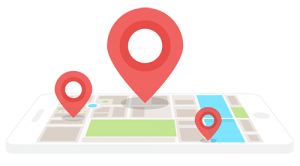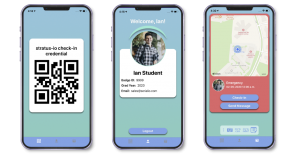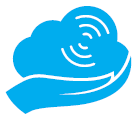Emergency Management Tracking Techniques
Overview of Emergency Management Systems
Emergency management systems improve workplace safety and streamline response procedures by integrating technologies, protocols, and communication channels. Furthermore, these systems facilitate preparedness, response, and recovery during critical situations. Key components of effective emergency management systems include incident reporting and alert systems, communication channels, centralized databases, personnel tracking and accountability, real-time incident monitoring, and integration with emergency services.
During crises, it can be challenging to track everyone’s whereabouts. However, implementing effective tracking systems provides valuable insights into individuals’ presence, location, and potential absence. This information guides emergency responders, enables informed decision-making, and ensures the safety and well-being of all individuals within your premises.
1. RFID Technology for Personnel Tracking

2. Biometric Identification Systems
Biometric identification systems provide a highly accurate and secure method for tracking individuals using emergencies. These systems utilize unique physical or behavioral characteristics, such as fingerprints, facial features, or voiceprints, to identify individuals. Biometric systems streamline the tracking process, offer fast and accurate identification, and provide high security for emergency management. Leveraging the power of biometric identification, safety supervisors enhance personnel tracking during emergencies, ultimately improving overall workplace safety.
3. Location-based Tracking Systems

4. Cloud-based Emergency Management Platforms
Cloud-based emergency management platforms streamline personnel tracking during emergencies. Centralized databases are accessible from any location, enabling seamless collaboration and information sharing. Real-time communication features facilitate swift coordination and integration with many tracking technologies to provide a comprehensive view of personnel movements. Data integrity and cybersecurity measures are crucial when adopting cloud-based platforms. Leveraging these platforms enhances emergency response capabilities, improves coordination, and ensures the safety of individuals involved.
5. Training and Preparedness for Safety Supervisors

6. Stratus-io: Time & Attendance
What if there was one solution that did it all? Stratus-io is a Time and Attendance app developed by Serialio. It offers a comprehensive suite of features to ensure that your workplace is equipped for emergency management. Features of Stratus-io include:
- Attendance from Remote Locations: Use any iOS or Android device, including tablets and mobile phones, to confirm who is safely accounted for at evacuation sites and muster points.
- Live Personnel Tracking: Maintain the most recent scanned location and status of all personnel, with automatic updates communicated seamlessly to your mobile device. Real-time information syncs to your mobile device allowing you to see who has been deemed safe and who has not. Provide emergency personnel with the names, ID photos, and last known locations of all missing members of staff and visitors.
- Offline Activity Recording: Cellular WiFi can be spotty in remote locations. Stratus-io continues to record and update personnel check-in status without internet connection.
- Geolocation Tracking: Use GPS technology to track employees’ locations when they clock in or out to ensure they are at the designated work site.
- Badge Compatibility with RFID Handheld Readers: Partnered with HID Global, the world’s largest badge manufacturer, for compatibility with existing employee and visitor badge types. The idChamp® NF4 Wireless badge reader reads all types of badges and helps with check-in during emergencies.
- Meaningful Reporting: View scan records, emergency sessions, and response times at any time to see where people were marked safe. Keep track of who’s been inside your facility and account for them. New features and functionality are being released to ensure that your business is equipped to track personnel and collect the data you need.
- Compliance Features: Stratus-io helps businesses comply with labor regulations and record-keeping requirements, ensuring accurate documentation of employee attendance.
Conclusion
Employee accountability during emergency evacuations, along with visitors, and contractors during is crucial for ensuring their safety. Implementing advanced tracking technologies and providing proper training to safety supervisors enhances emergency response efforts and workplace safety. Real-world case studies demonstrate the effectiveness of various tracking techniques, emphasizing the importance of selecting the right technologies and staying updated with emerging advancements. By leveraging these techniques and investing in training and preparedness, workplaces can improve their emergency management systems, enhance response capabilities, and prioritize the safety of individuals during critical situations.



